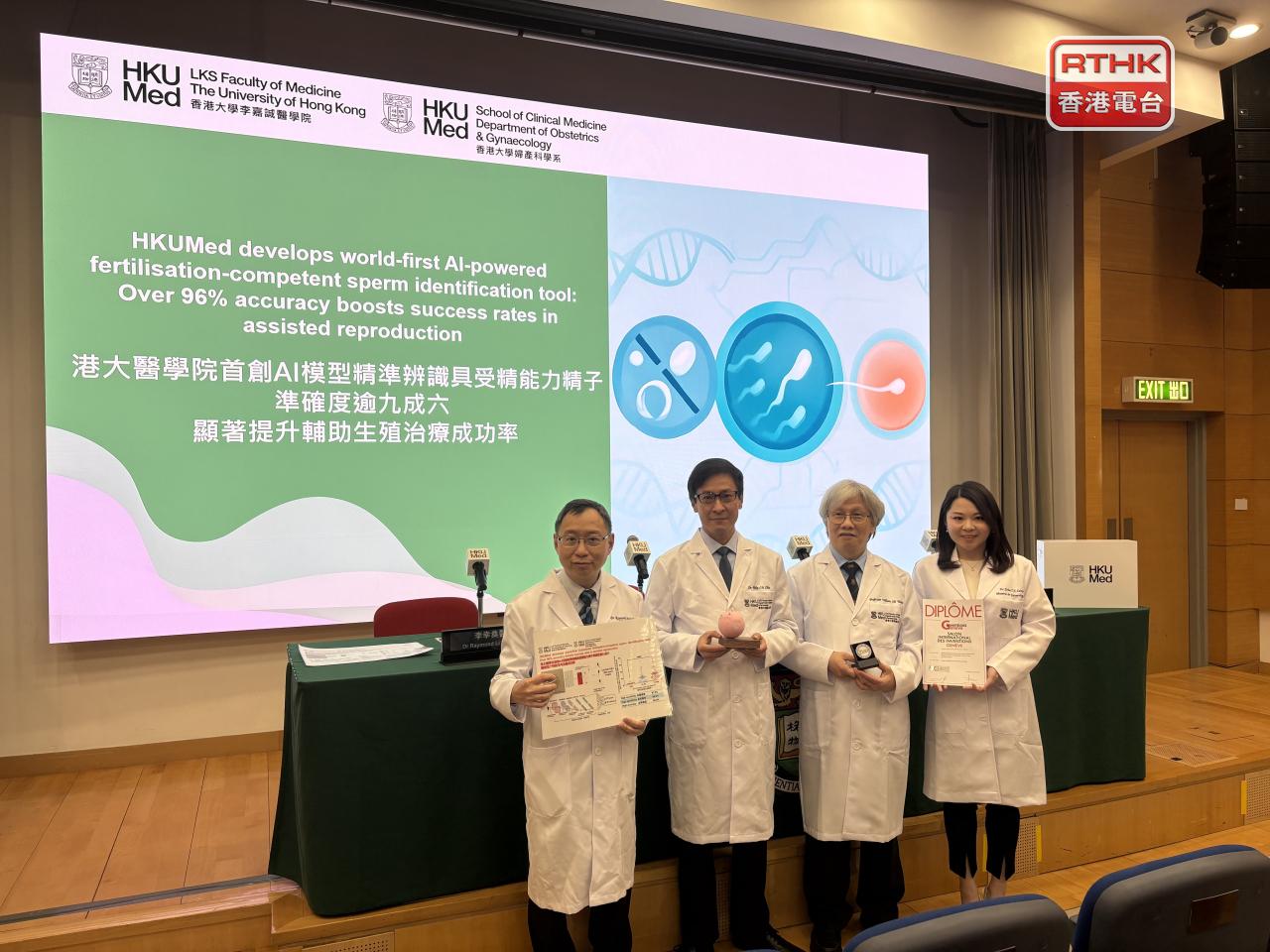Researchers at the University of Hong Kong have developed the world's first artificial intelligence model that can identify the fertilisation potential of human sperm.
The technology outperforms conventional methods of manual semen analysis in speed and reliability, they said.
Erica Leung, a post-doctoral fellow in the university's department of obstetrics and gynaecology, said the model evaluates sperm morphology based on its ability to bind with the outer coat of an egg, or the zona pellucida.
"This model can provide us the predicted percentage, and this value represents how many sperm in each clinical sample have the power or ability of binding to the zona pellucida, which we can use to predict the fertilisation outcome following the conventional IVF [in-vitro fertilisation] treatment," Leung said.
The model has a clinical validation accuracy rate of 96 percent, providing a more objective way to assess sperm fertilisation potential, the researchers said.
The technology, they added, can be used alongside conventional semen analysis methods to provide more comprehensive information on sperm samples.
Clinicians can then make informed decisions regarding patients' assisted reproductive treatment (ART) options to improve fertilisation outcomes, reducing the financial and emotional burdens that come with the failure to conceive.
For example, patients with sperm that cannot bind to the egg could consider intracytoplasmic sperm injection (ICSI) instead, Leung said.
"Under normal circumstances, most patients ... receive the conventional IVF treatment as their primary treatment option," she said.
"But if we can actually identify this sort of patient with the defective ability in advance, we can suggest [they] undergo an alternative treatment, which is ICSI.
"Essentially, it's a more invasive procedure, but in a way, we can bypass using the conventional IVF treatment during their first cycle to reduce the overall number of the ART cycles that they have to undergo."
The researchers will conduct large-scale clinical validation of the model at three locations in the coming years.
They also said they hope to develop a more advanced model to simultaneously evaluate the sperm fertilisation potential and identify high-quality live sperm to be used directly for subsequent clinical procedures.





